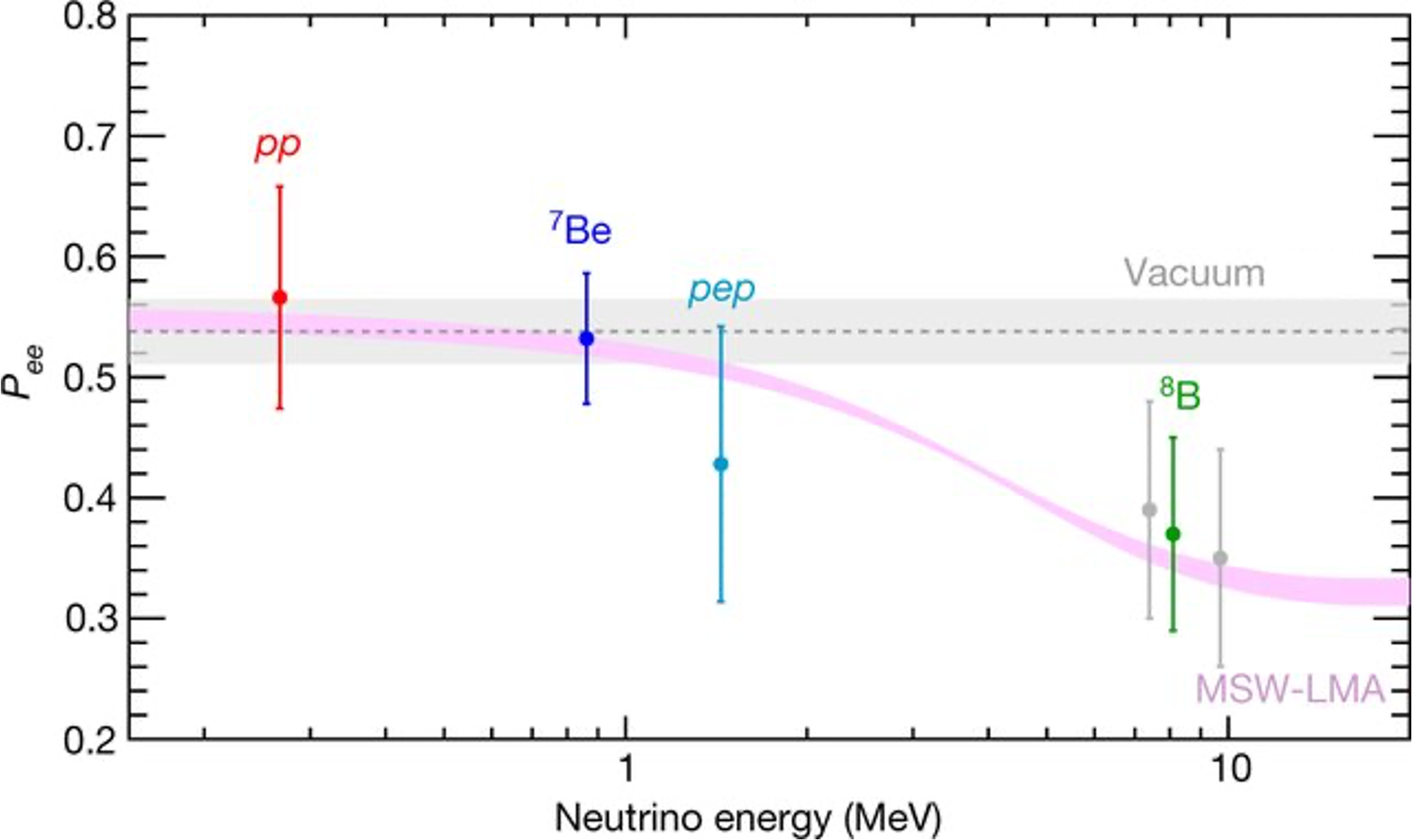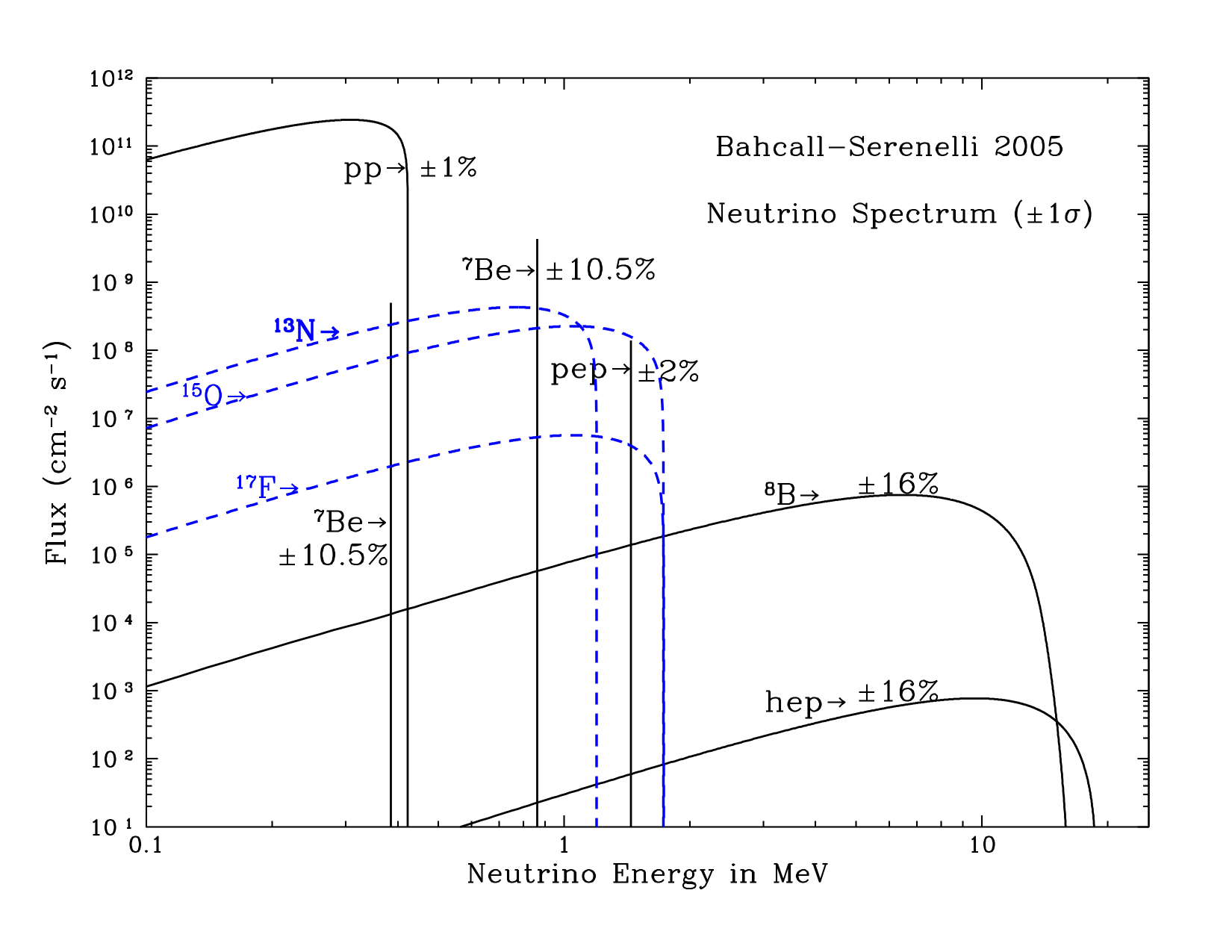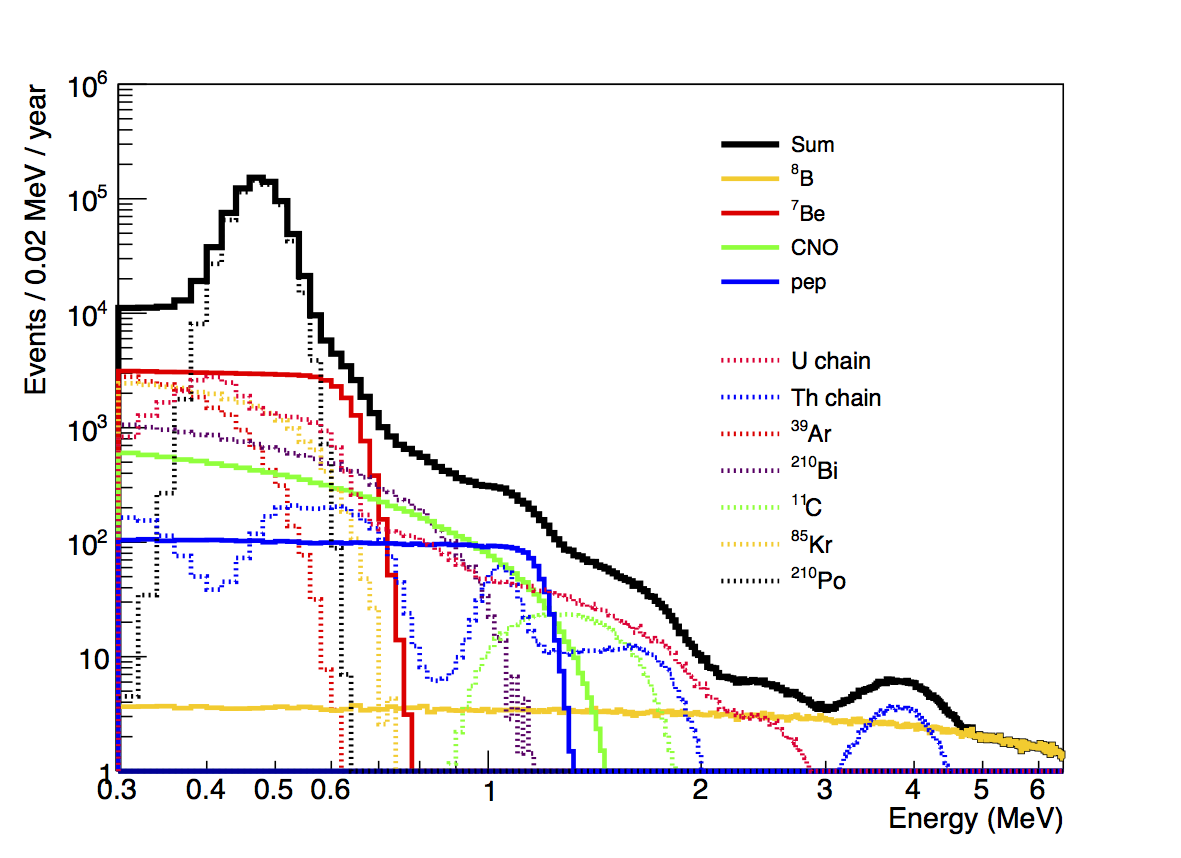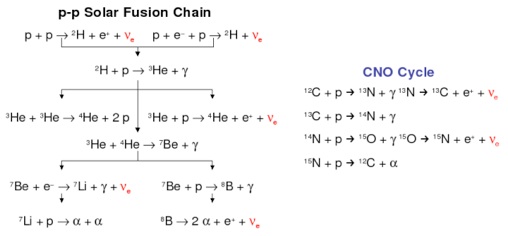Science Programme
The SNO+ Experiment is used to investigate a large suite of physics phenomena.
Find out more about our current active research interests here.
Solar Neutrino Oscillations in Matter
The SNO experiment proved that about two thirds of the electron neutrinos produced in the sun show up on earth as muon- or tau- type neutrinos. Combining the SNO result with those of other solar neutrino experiments and the KamLAND reactor anti-neutrino experiment demonstrated that this flavour change is the result of "MSW"-type matter enhanced neutrino oscillations.
Based on our current understanding of neutrino oscillations, the probability that an electron neutrino, produced in the sun, is detected as an electron neutrino on earth - the survivial probability - is a function of the neutrino energy. At high energies (at least high for solar neutrinos), matter effects are important and the survival probability is uniformly low. At lower neutrino energies, however, the matter effects gradually give way to vacuum oscillations, and the survival probability increases. The survival probability is shown here with some experimental results:

Although the electron neutrino survival probability at the "matter oscillation dominated" and "vacuum oscillation dominated" extremes of the solar neutrino flux have been studied, there is interest to make more precise measurements in the "transition region" between around 1 and 4 MeV. Directly observing the rise in the survival probability in the transition region would confirm the MSW mechanism. The transition region is also the most sensitive place to look for sub-dominant effects in neutrino oscillations, such as a sterile neutrino admixture or non-standard neutrino-matter interactions.
As shown here, we can see that the best way to probe this interesting transition region is to measure the flux of pep neutrinos and attempt to detect 8B solar neutrinos down to lower energies than previously studied:



It is expected that a small fraction of the sun's energy comes from the "CNO" fusion cycle, shown on the right side of the figure above. The actual CNO contribution is very poorly known, as it is difficult to predict theoretically. A measurement by SNO+ of the flux of neutrinos produced in the CNO cycle would tell us the CNO contribution to solar energy generation, giving us interesting information about the inner workings of the sun. Measuring the CNO solar neutrino flux also reveals the chemical composition or "metallicity" in the core of the sun; this is important for understanding energy production and flow in solar models.
Detection of CNO solar neutrinos is particularly challenging due to their low rate and the presence of similar radioactive backgrounds.